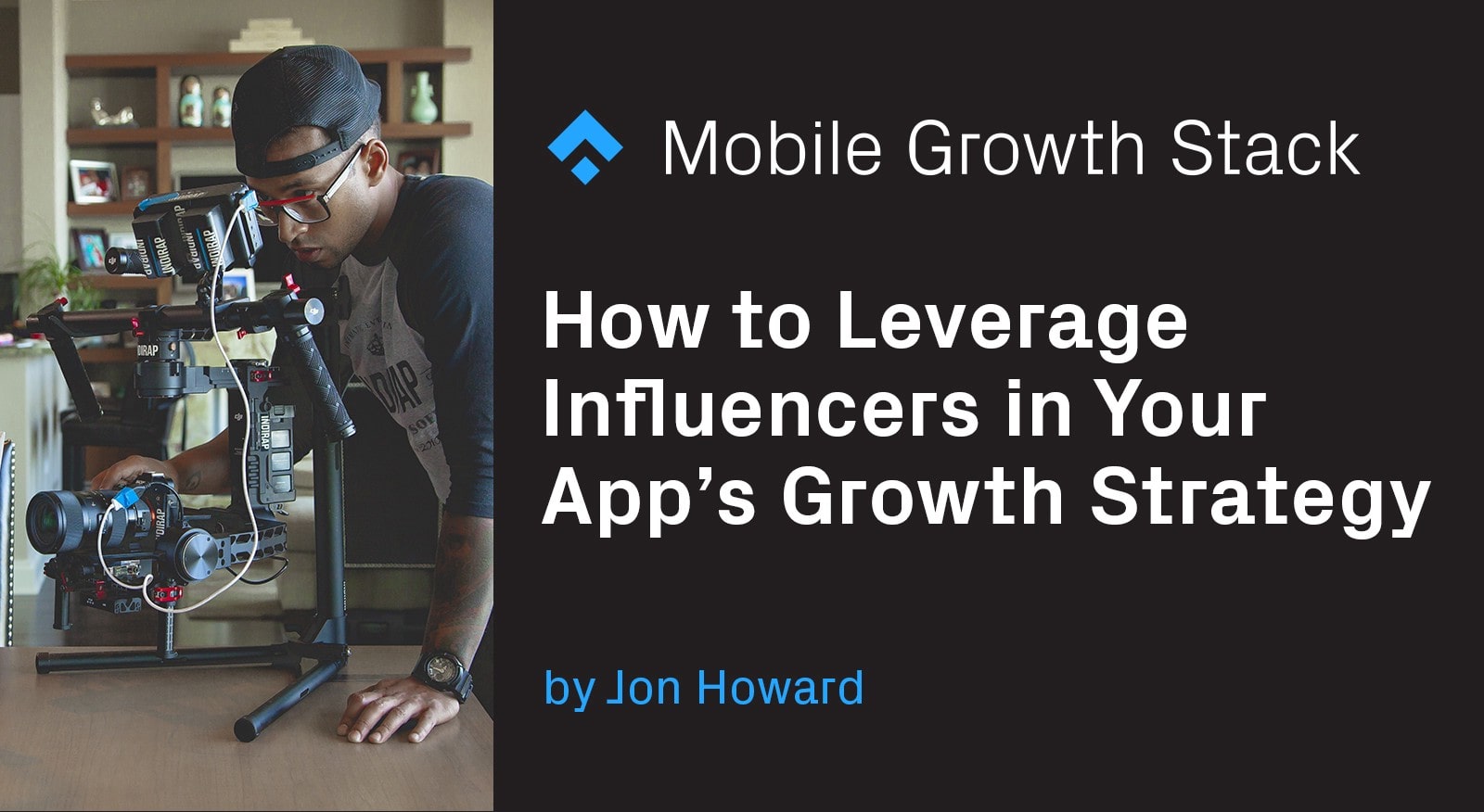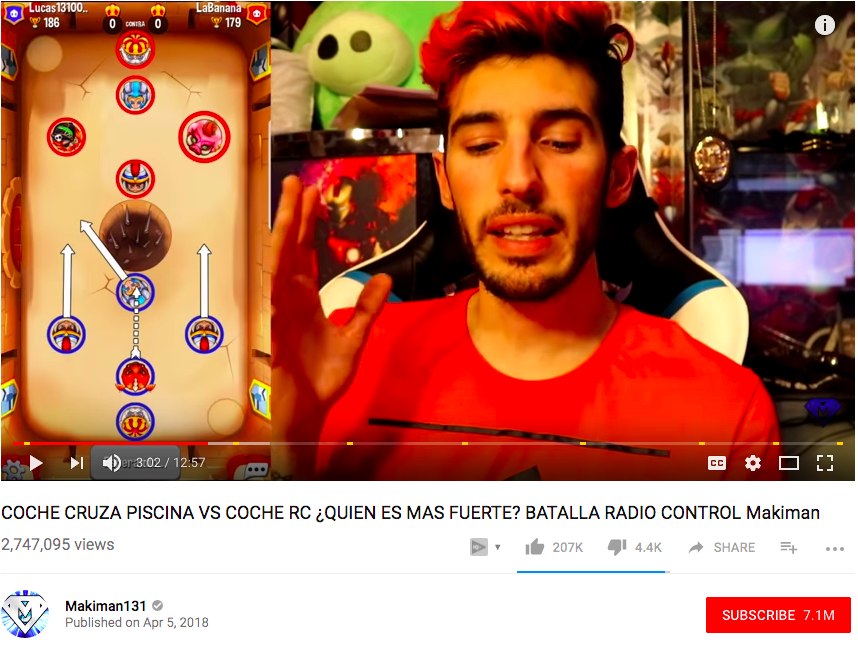This is a guest post by Jon Howard, Head of PR/Influencer Relations at Flaregames.

Influencer marketing can be an effective means to secure engaged users for your app/game. However, without proper due diligence measures and a deeper understanding of your product’s target audience, it can also be a volatile marketplace where imprecise data and an element of finger-crossing is the norm. In this piece I’ll cover the wider approach we take to influencer marketing at Flaregames while digging into how we find the right users; ones we know will really engage with our games.
Knowing your audience
One of the biggest mistakes you can make — and this is coming from personal experience — when executing on an influencer campaign is not knowing your audience. If you can’t picture an image of your future app/game user in your head, don’t start signing off on multi-thousand dollar contracts with influencers.
It’s very easy to get lost in the sea of content on platforms like YouTube or Instagram and make baseless assumptions about influencer channels fitting your app/game. Again, this is coming from someone who’s made this mistake and learned from it.
While it depends much on the size of your marketing team and the budget invested in R&D, take the time during your app’s beta phase to really dig into the core audience engaging with your product. At Flaregames, we spend a load of time in focus group testing, working with a variety of small focus groups to try out different messaging and concepts. We then conduct broader quantitative surveys that speak to thousands of gamers at a time, looking at the reactions from certain demographics and even comparing crossover audiences. In our case, one example could be people who engage primarily with console and PC games over mobile.
To give you an ideal of scale, for the soft launch of our mobile shooter Zombie Gunship Survival we tested 30 different audience segments (target groups) in four different countries, reaching an audience of over 35 million people. What you get in the end-stage is a clear picture of who you want to reach with your marketing campaign.
Quick learning to share: there’s always industry debate about what kind of mix you should aim for — for purposes of scale/download volume — when recruiting different-sized influencers for your campaign. Do I partner with one big channel for high impact? Do I work with a range of micro-influencers? Put simply, if you’re looking for hyper-engaged users, avoid binary thinking and let the data help guide which influencer channels are right for your product. In the next section, I dig into the next stage of this process.
Credit: Demolition Ranch/YouTube
Connecting influencer data with your data
Knowing your product’s audience is only half the job. Now it’s time to know the audience of your target influencers/channels. Frankly speaking, metrics like the number of subscribers and average view figures tell you very little and are a dangerous guide, not least because of viewer fraud, particularly on YouTube. What you need to know is how engaged a channel audience is, and how receptive that audience is to sponsored content.
Any influencer agency worth their salt will have access to the average engagement rate (% ratio of video likes/comments/shares compared to overall views) for a channel. There are lots of variables involved but as a high-level guide, any YouTube channel with over a 5% video likes to views ratio is a good bottom-line indicator of an engaged audience, while nearer to 10% is particularly strong.
To define the audience’s reaction to sponsored content, that’s down to you to put in the hours and watch other sponsored videos that influencer may have released within the last 3–6 months. Check out the comments below the description and get a feel for the sentiment. This is not a quantifiable assessment and it can be a daunting task to wade through a lot of the bad stuff (trolls, spam links, assorted vitriol), but it’s worth the time spent.

Example of strong views to likes engagement ratio — Credit: Makiman131/YouTube
After you’ve looked at engagement, it’s time to dig into the audience insights from each channel. Taking the example of YouTube, a channel creator has information on his/her audience including age, gender, location, viewing device/OS, and video consumption. Providing your target influencers are willing to privately share this information, cross-reference this data with your product audience findings. If there is a strong crossover, then wonderful.
Making contact with influencers — the outreach strategy
There are different schools of thought regarding the building out of your influencer program, and in my opinion, it’s really down to the amount of time and resources you can spare. Boiling it all down: if you have the internal resources to handle the hundreds of emails and Skype calls to make an influencer campaign happen, then do that. Same principles as a PR manager reaching out to journalists, nothing beats the personal touch and the passion and knowledge you have for your own product.
However, launching an app/game on the market is always a hectic time and there are many agencies out there who really know their stuff and are very good at mediating between you and a target influencer/s. The industry has matured rapidly from a couple years ago when pricing models and contractual negotiations were decidedly more “Wild West”. This also means that transparency has increased and it’s perfectly possible to sign campaigns based on agreements with fixed CPIs or CPMs to add another way to mitigate against a campaign performing poorly.
Building out your influencer partnerships with further content
So everything looks good and you’re verging on closing a partnership with your chosen influencer/s. But what else can be agreed upon to further drive value?
This is a really interesting topic as at Flaregames we’re big proponents of influencer partners featuring in our user acquisition videos on Facebook and during in-game/app ads. Over the last 2 years, we’ve experienced cases of influencer-driven UA ads performing twice as well (in terms of click-through rate %) as other creatives in our video networks at the time.
Concretely, consider therefore if you might want to leverage your influencer partner/s in Facebook videos, YouTube ad pre-roll, tutorial content about your product — or even simple things such as written endorsements for your PR efforts. The influencer may not be willing to do this, or it may require a higher offer, but consider how this extra content could make for a more 360-degree campaign that’s less dependent on one channel.
Example of a UA ad starring a YouTube gaming influencer — Credit: Flaregames x Royalistiq
Finalizing the creatives
Influencers know their audience way better than you — fact. Don’t pretend otherwise. This means you shouldn’t 100% dictate the creatives produced between you and the influencer. Just make sure you’ve clearly mapped out the brief and wider vision for the partnership from the outset. Provide a detailed document breaking down your product, your key campaign messages and how you want to communicate to your product audience.
Credit: Hannah Hoffman x Flaregames partnership for Nonstop Knight
In short, think of influencers as creative consultants as opposed to one-off traffic providers. They are the masters of engagement, and providing they’ve agreed to work with you on the basis your product is a fit for their channel, will know how to best showcase your app. Needless to say, this doesn’t mean you shouldn’t step in if the suggested creative isn’t doing your product justice, and/or could be potentially harmful to your brand. With this in mind, ensure to leave plenty of time for feedback before your campaign is set to go live.
Going live — the nitty-gritty details to look out for
Before a video is pushed live and you start to (hopefully) see the downloads roll in for your product, there’s a couple of minor things that actually have a significant impact on performance. The key areas are thumbnail image, video title, and links in description:
- Thumbnail (YouTube): don’t underestimate how much this impacts the number of people clicking through. If you know from your market research that your audience like the game presented in a certain way, make sure to work with the influencer to incorporate that.
- Video title: this is more down to what works for each influencer, but receive the video for the title before it goes live so you know how your product/brand is being presented.
- Description: firstly, be mindful at all times of FTC guidelines — if an influencer is not correctly disclosing sponsored content, the onus is on you to correct before going live. Secondly (and this is specific to YouTube), push for all download links to be above the description fold and ensure the agreed call to action is being used by the influencer, both in the description as well as the associated verbal callout in the video. Make it as easy as possible for your future players to download your product.

Credit: Smosh Games x Flaregames partnership for Nonstop Chuck Norris launch
How influencer marketing sits within the growth stack
I hope the above helps anyone new to influencer marketing to get a clearer picture on what needs to be done to increase the chances of a successful influencer campaign = attracting engaged users who invest in your app/game.
When it comes to influencer marketing for mobile apps/games, one of the bonus benefits is that downloads from influencers’ content pushes a game up the app store charts, thus attracting more users by virtue of a high chart position (regardless if those users didn’t watch the influencer’s content). However, to achieve this kind of impact requires an influencer campaign of a certain scale, therefore a certain cost.
Secondly, not every influencer partnership will yield thousands of downloads. There are too many variables outside of a marketer’s complete control to ensure KPIs are surpassed with every video. However, the natural way of mitigating against this is to operate at a certain scale, working with a host of influencers for any given campaign to ensure that its success doesn’t hinge on one piece of content.
Put short: if you’re operating on low budgets (under circa 10k$ for an influencer campaign), it’s still possible to work with several influencers and mitigate against the poor performance of a particular video but be realistic when it comes to setting your KPIs and think about how to leverage those influencer partnerships beyond traditional sponsored videos (as highlighted earlier).
Thanks to Regina Leuwer.
Table of Contents












